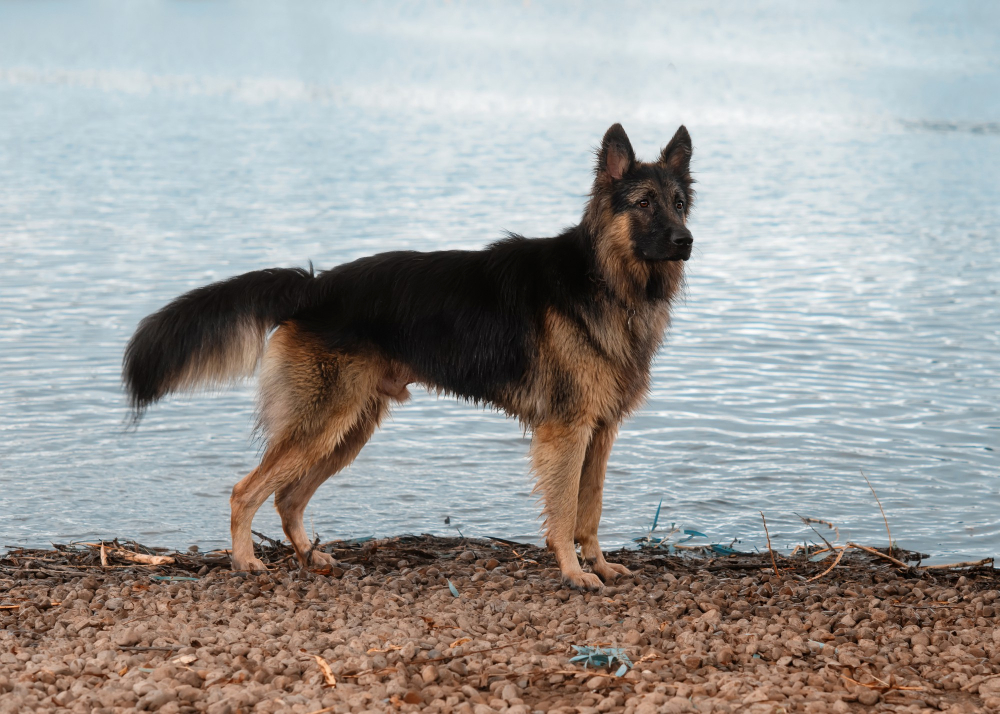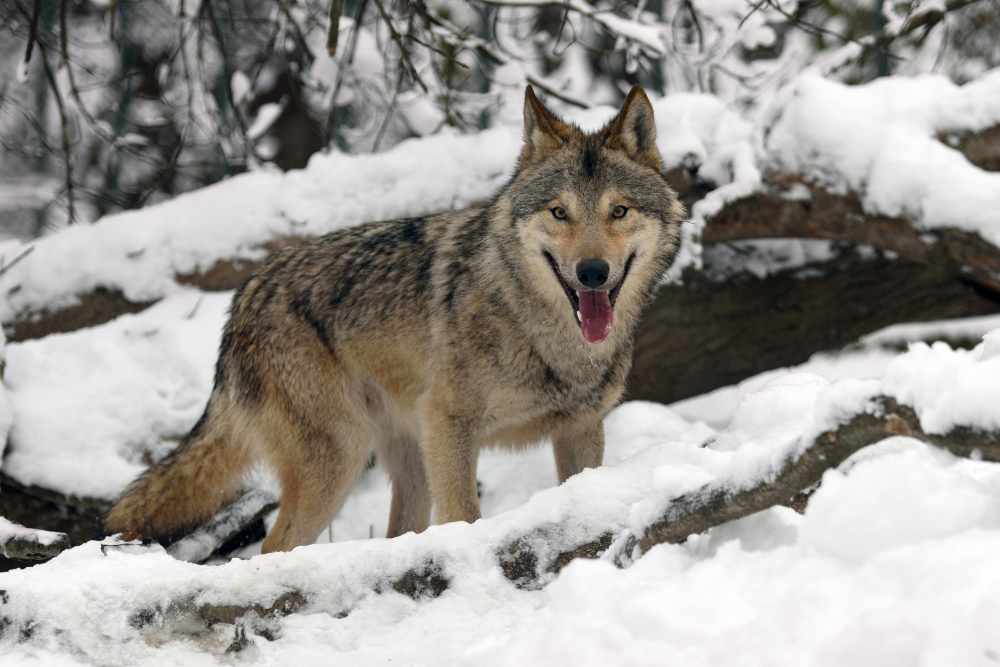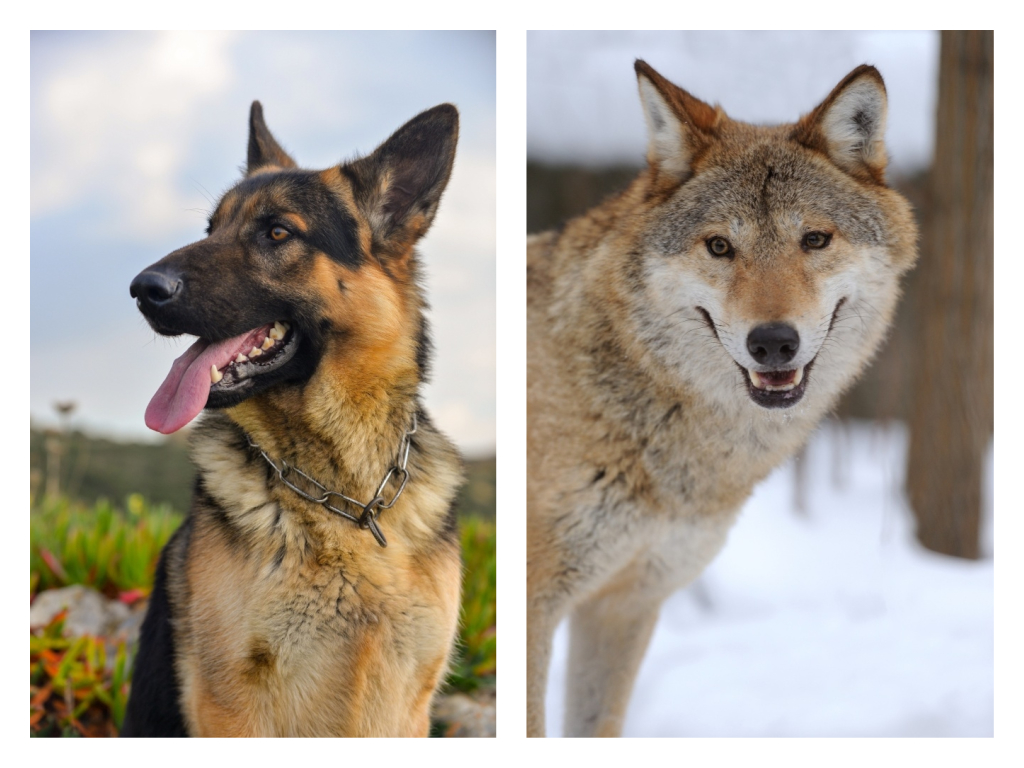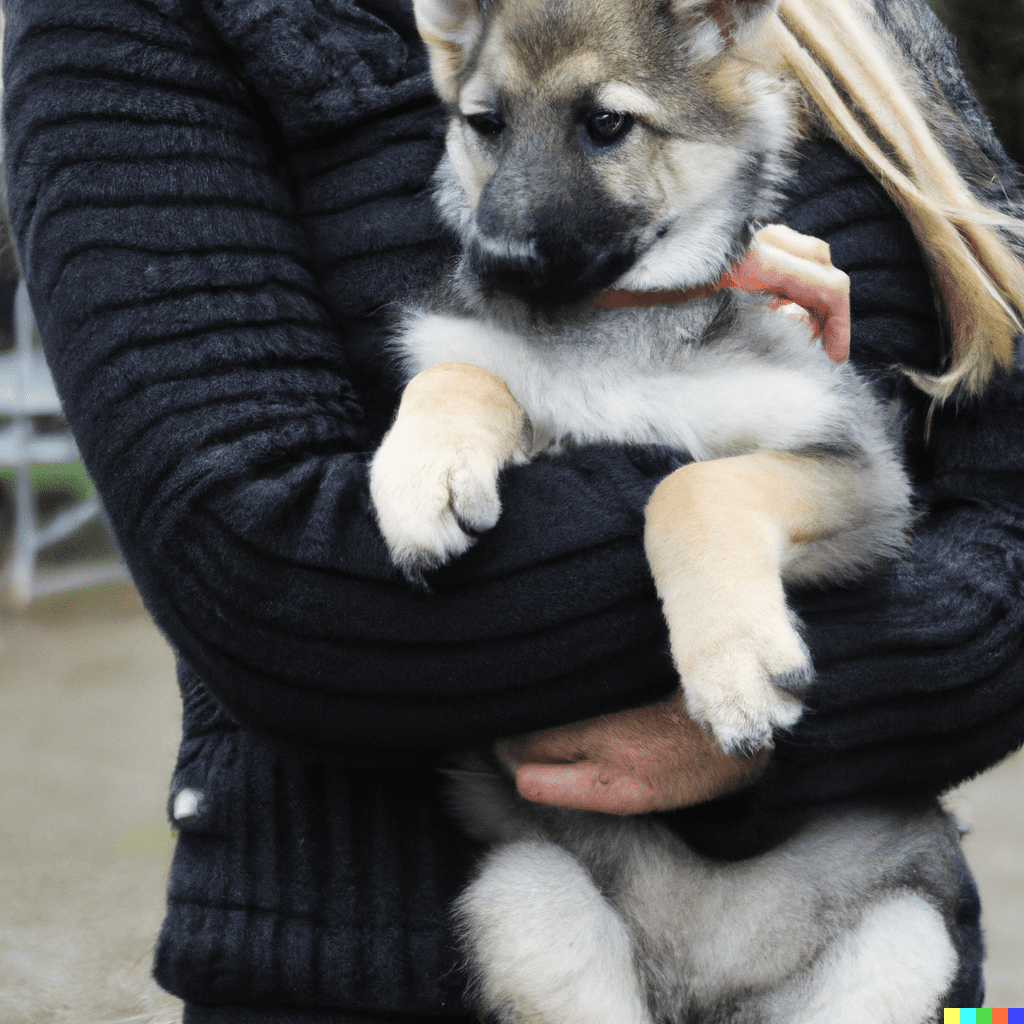All modern dogs are descendent of grey wolves. Some dog breeds, like German Shepherds Dogs, simply look a lot like wolves than other dog breeds. Not only do they share 99.9% of their DNA, they also have some similarities including pointed ears and a pointed muzzle. But just because they look similar does not mean they share the same trait. In fact, they behave a lot differently.
Apart from the physical differences like body build, coat, and eye color, German Shepherd Dogs and Wolves behave a lot differently. German Shepherds were domesticated – they can make wonderful companions, co-workers, and pets. And wolves are wild animals and they do not show or seek affection from humans.
In this article, we will look at 10 differences of which they could be compared. Let’s get started!
You may also like: How Can I Tell if My German Shepherd is Part Wolf?
Summary: 10 differences between a German Shepherd and a Wolf
| German Shepherd | Wolf | |
| 1. Looks | German Shepherds have smaller skulls, muzzles, and teeth. Legs are shorter as compared to wolves. The paw of a dog is about half the size of that of a wolf. Most German Shepherd Dogs have brown eyes. | Wolves are larger in build in comparison. Wolves have longer muzzles and legs, larger feet, and a broader skull. The eyes of a wolf are yellowish or amber in color. |
| 2. Weight and height | Males: 24-26 inches tall Females: 22-24 inches tall Males: 70-90 lbs. Females: 65-80 lbs. | The average height of wolves ranges from 26-33 inches tall. Adult wolves: 80-180 lbs. |
| 3. Bite force | Up to 238 psi | 1200 psi or more |
| 4. Hunting abilities and diet | The German Shepherd Dog was not bred to be hunting dogs but some have a strong prey drive and tend to chase small animals as instincts. But they probably will not hurt if you feed them. GSDs can eat meat as well as other human food like vegetables, fruit, grain, and so on. | Wolves hunt in packs, allowing them to cooperate and take down much larger prey. Wolves are carnivores and anything they can hunt in the wild. |
| 5. Reproduction | Female GSDs come into season or heat twice a year, beginning as early as 6 months old. | Female wolves come into season only once a year not until they reach the age of 2-3 years old. |
| 6. Temperament | German Shepherds are known for their loyalty and affection to humans. | These are wild animals and they do not show or seek affection from humans. |
| 7. Socialization | German Shepherds Dogs are generally more sociable with humans, children, other animals, and other pets as well. | Wolves are social and live in packs. But they are rarely sociable with humans and or other animals. |
| 8. Eye contact with human | Mutual gazing (or eye contact) between a dog and its owner is a form of social communication and can improve bonding. (Source) | Wolves typically use eye contact as a threat and avoid human eye contact. |
| 9. Dependence on human | German Shepherd Dogs are very dependent on human care and may develop behavior problems when left alone. | Wolves do not need to depend on humans and can survive in the wilderness. |
| 10. Population | It is estimated that there are more than 10 million German Shepherd dogs globally. (Source) | The global wild wolf population was estimated to be 300,000 in 2003. (Source) |
1. Looks
In general, German Shepherds have smaller skulls, brains, muzzles, and teeth in comparison to wolves. Their legs are shorter as compared to wolves. The paw of a German Shepherd is about half the size of that of a wolf.
Most German Shepherd Dogs have brown eyes, while wolves usually have yellowish or amber eyes.
2. Weight and Height
The average height of GSD ranges from 22-24 inches tall. The average weight of an adult male wolf is 65-90 lbs, with females being smaller than males.
The average height of wolves ranges from 26-33 inches tall. The average weight of an adult male wolf is 80-180 lbs.
3. Bite Force
German Shepherd Dogs have 238 psi of bite force, and a wolf has a bite force of up to 1200psi.
With this in mind, a wolf can easily kill a German Shepherd Dog (or any other dog) in a fight, let alone a human.
Although wolves do not prey on dogs, nor are they keen on attacking humans, they can still be very dangerous and are prone to attack if their territory or food source is being threatened.
4. Hunting abilities and diet
German Shepherds were not bred to be hunting dogs (like retrievers) but some have a strong prey drive and tend to chase small animals as instincts. But they probably will not hunt if you feed them well.
GSDs have become omnivores since they were domesticated. And they can eat meat as well as other human food like vegetables, fruit, grain and so on.
On the other hand, wolves are carnivores ever since and they prey on large animals (like bears or even moose) as their main food source. Wolves hunt in packs, allowing them to cooperate and take down much larger prey.

The German Shepherd Dogs originated in Germany in the late 1800s. This breed is intelligent, responsive, and obedient shepherd dogs.
This breed was originally responsible for herding sheep and protecting flocks from predators. And they are also used as war dogs, police dogs, or guided dogs for the blinds.

The wolves came from Eurasia between 70,000 and 24,000 years ago. But the exact timing of the influx is unclear.
The wolves came before North and South America was separated by a large glacier, which at its peak covered about a third of the northern parts of North America. (Source)
5. Reproduction
Female GSDs come into season or heat twice a year, beginning as early as 6 months old. But this does not mean they are ready to mate until they are 18 months to 2 years old.
Female wolves come into season only once a year and do not mate until they reach the age of 2-3 years old.
6. Temperament
German Shepherds are known for their loyalty and affection towards humans, they will love you if you treat them well.
They are good with children and easy to train. GSDs will protect you against any intruder.
Wolves are wild animals and they do not show or seek affection towards humans. You should be careful and never bother them or let your children do.
Wolves are very protective of their packmates.
Both German Shepherds and wolves can become territorial and prone to become aggressive if their territory or food is being threatened.
7. Socialization
If German Shepherds are socialized early on, they can get along well with humans, children, other animals, and other pets as well. Otherwise, they will be aloof to strangers and become aggressive.
Wolves are only sociable with their packs. They are rarely sociable with humans and other animals. In fact, wolves are wary of people and tend to avoid human interaction.
8. Eye contact
According to the AKC, dogs (including German Shepherds) will stare at their owners to express affection. In fact, mutual staring between humans and dogs releases oxytocin, known as the love hormone.
Other studies also show that mutual gazing (or eye contact) between a dog and its owner is a form of social communication and can improve bonding. (Source)
Wolves, however, typically use eye contact as a threat and avoid human eye contact. Also read: How to Survive a Wolf Attack from Lifehacker.com
9. Dependence on human
German Shepherds, like most dogs, are very dependent on human care and may develop behavior problems, like separation anxiety when left alone.
It is not even advised for owners to leave their GSD alone for over 4 hours at home.
Wolves, as wild animals, do not need to depend on humans and can survive in the wilderness.
10. Population
It is estimated that there are more than 10 million German Shepherd dogs globally. (Source) The global wild wolf population was estimated to be 300,000 in 2003. (Source)
GSDs, being the second most popular dog breed in the US, can be found anywhere in the world with their human owners.
Wolves can thrive in a diversity of habitats including forests, the Arctic, and deserts. Most wolves nowadays can be found in Eurasia and North America.
Conclusion
Although they are decedents of wolves, German Shepherds are a lot different from wolves from inside out. GSDs were deliberately bred to work and live with humans for over 100 years, while wolves live in the wild for centuries.
Most importantly, our beloved German Shepherds can easily be pleased and the rewards are their loyalty, affection, and obedience. That’s why they are so popular in the US as well as anywhere in the world.
Further questions
Can a German Shepherd reproduce with a Wolf?
Yes, these are called German Shepherd Wolf Mix or Wolfdog. Not everybody can cater to the lifestyle of a half-wolf half-dog. They are illegal in many states, counties, and cities.
Also read: Your ultimate guide to the German Shepherd Wolf mix from k9web.com
Can a german shepherd fight a wolf?
A German Shepherd is unlikely to beat a wolf in a fight and may suffer from serious injuries or get killed in the event of a wolf attack. German Shepherds do not have the physique necessary to withstand the strong bite force of a wolf to back down.
Related: Can a German Shepherd Kill a Wolf?
Do wolves attack humans more often than German Shepherd?
Although wolves must make their living by preying on large animals, aggression by wolves toward people is much less common than aggressive behavior by German Shepherd. Yet there are instances when wolves can threaten or injure people and pets.
Related: Will German Shepherds Attack Their Owners?
Is a German Shepherd closest to a wolf?
In a project termed CanMap, a collaboration among Cornell University, UCLA and the National Institutes of Health, scientists gathered DNA for nearly 1,000 dogs across 85 breeds for analysis. They found that the four dogs closest to their wolf ancestors are the Shiba Inu, chow chow, Akita, and the Alaskan malamute. However, this study was done on 85 breeds.
Eric is a dog lover and a blogger. He loves spending time with dogs more than with humans. You will find him training himself for the next marathon when he is not writing. And he loves Thai food~



